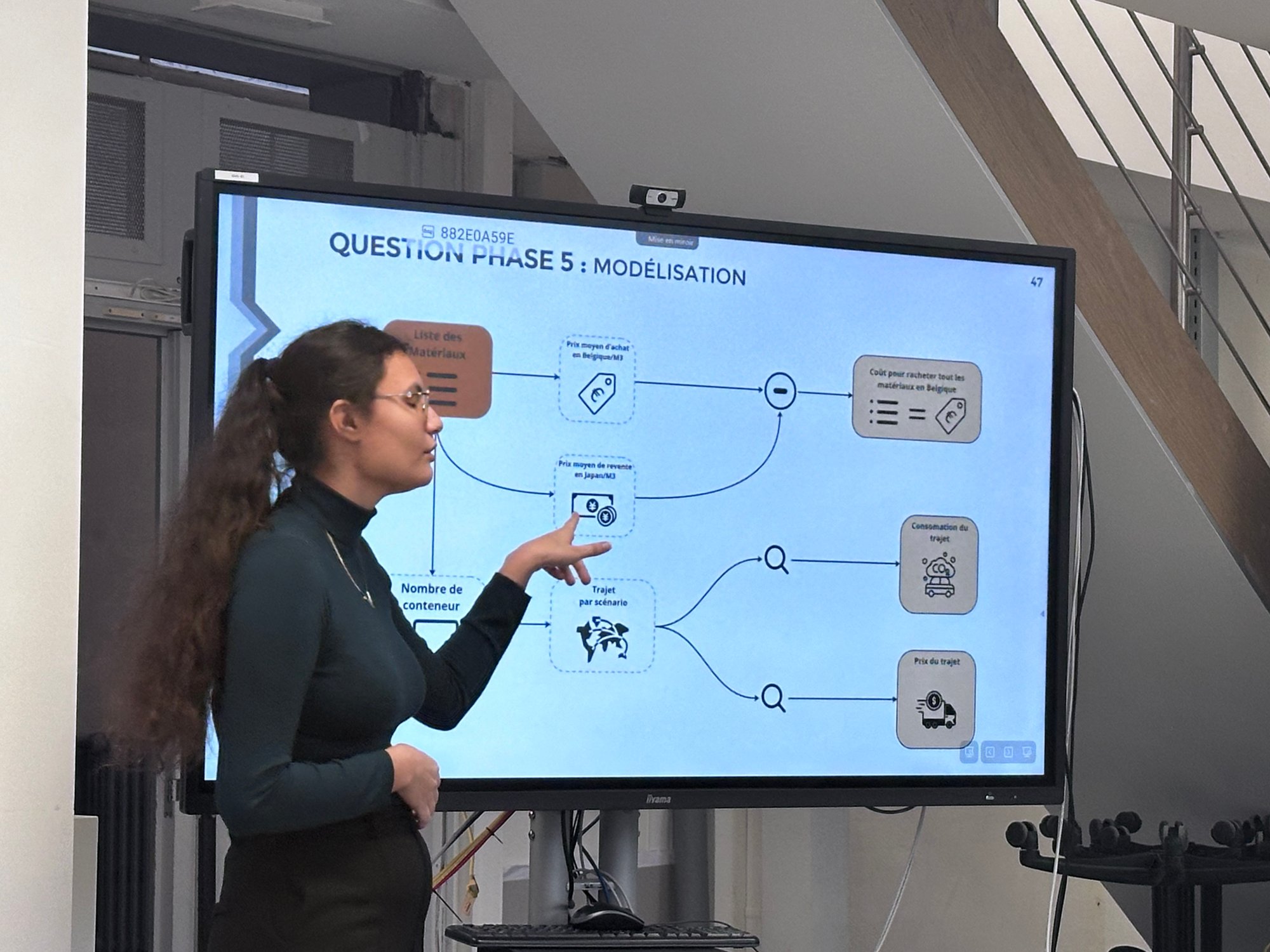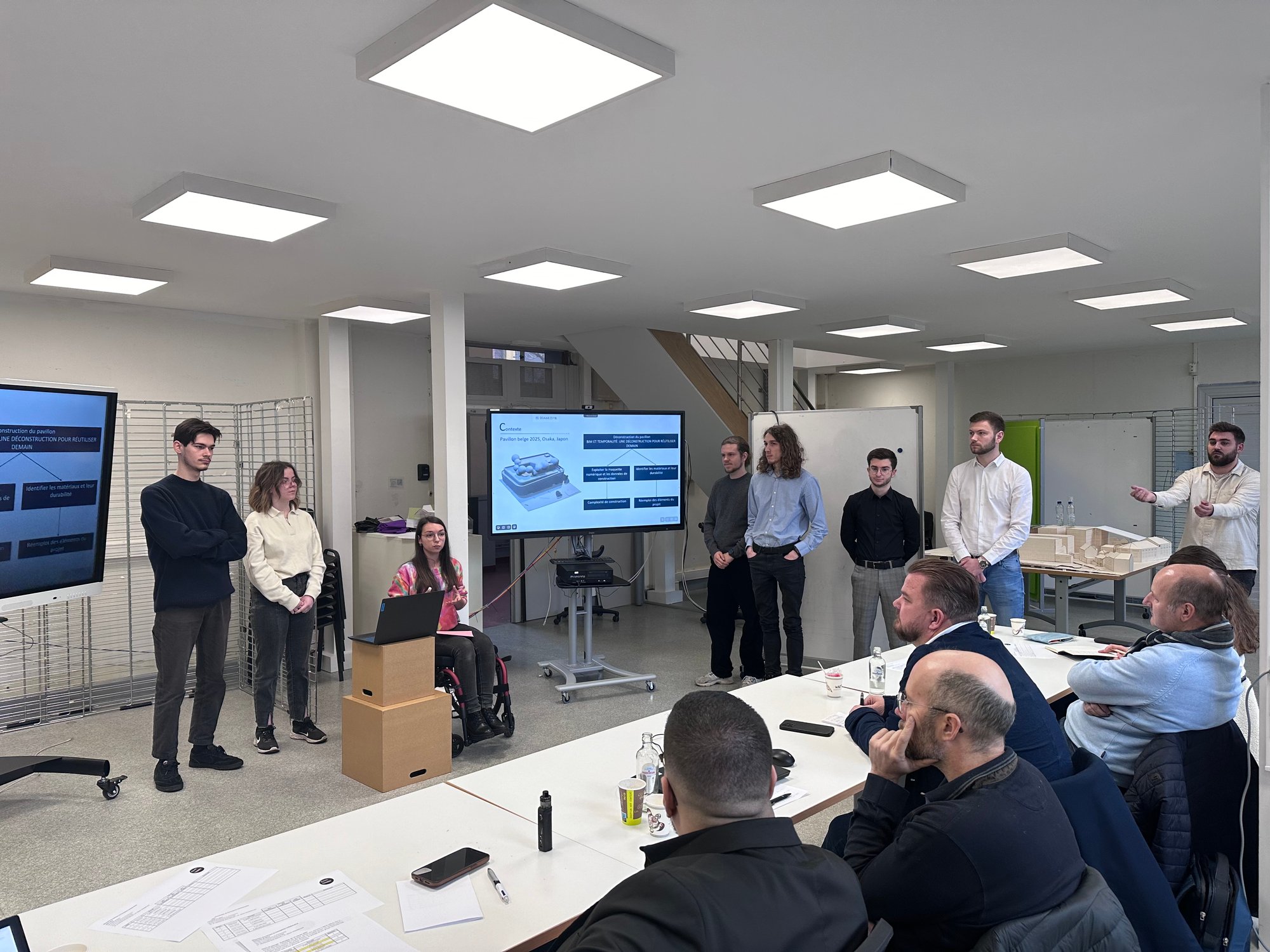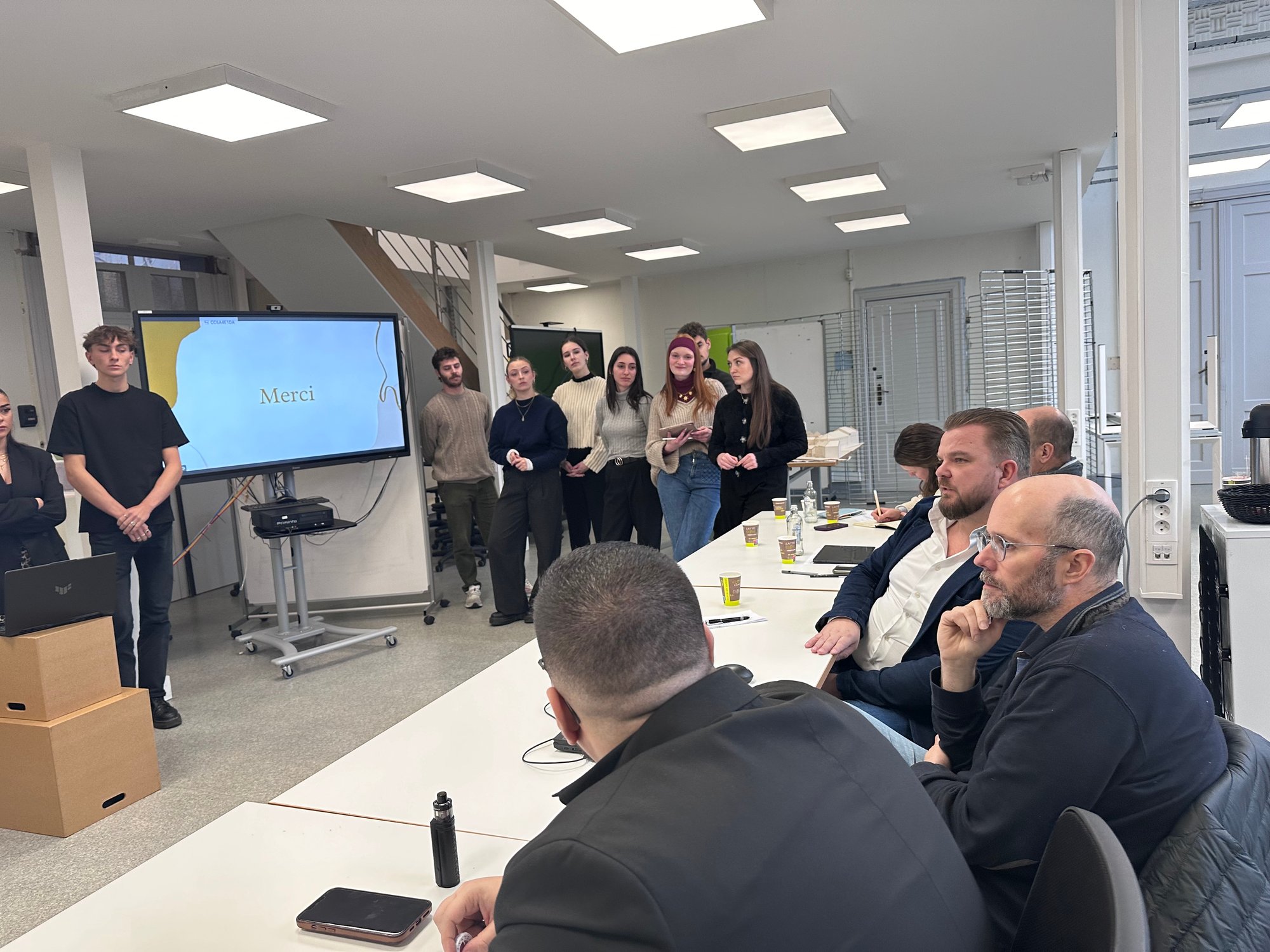At Expo 2025 Osaka, the Belgian Pavilion is not only a showcase of architectural creativity and sustainability but also a living case study for innovative education. As part of a Master's course at the Faculty of Architecture and Urban Planning of the University of Mons, students explored how Building Information Modeling (BIM) can contribute to sustainable deconstruction and the circular economy.
From Construction Waste to Circularity
The construction sector produces almost 40% of Europe’s total waste, a figure expected to double by 2050. Much of this waste is still managed through low-value methods such as backfilling. To move toward a more sustainable future, new strategies are needed to reuse, recycle, and maximize the value of materials.
BIM offers solutions by enabling collaboration, integrating complex datasets, and supporting lifecycle decision-making. The Belgian Pavilion, designed by Carré 7 with structural partners Pirnay and Poly-Tech, was conceived with deconstruction in mind, making it an ideal case study for students to test circular methods in practice.
Pedagogical Approach: Learning by Doing
Over one semester, 62 Master's students worked in six teams to apply BIM methodologies to the pavilion’s dismantling. Guided by a BIM Execution Plan (BEP), they collaborated using tools such as Revit, ArchiCAD, BIMcollab, and SmartViews. The process was structured into four steps:
Making BIM Reliable
Students learned fundamental workflows through exercises like BIM Town, which simulated urban planning with simplified rules, highlighting the importance of data reliability and collaboration.
Applying BIM to Circularity
Teams organized themselves into defined roles and focused on issues such as material classification, reuse potential, and economic value.
Scenario Development
The students leveraged the potential of Building Information Modeling (BIM) methodologies and their practical implementations— including the characterization of construction elements, management of object properties, and data filtering and visualization— to design and develop comprehensive scenarios for the management and reuse of the deconstructed building. These scenarios are structured around four key thematic areas.
-
- Topic 1 : Transport
How to manage different pre-exploitation scenarios for deconstructed materials across various sites by using a BIM-based approach ?
- Topic 2 : Deconstruction phases
Manage the deconstruction phases through the qualification of building materials and equipment
- Topic 3 : Deconstruction for Design
Manage deconstruction for design purposes
- Topic 4 : Deconstruction for the Economic Value
Manage deconstruction for economic purposes
Economic Exploitation
A key focus was the economic exploitation: maximizing the market value of materials for resale on reuse platforms. This approach supports the circular economy by reducing waste costs, generating revenue, and contributing to material sustainability.
The team identified how different stakeholders could benefit:
- Architects: integrating reused materials into unique, eco-friendly projects.
- Artisans: lowering production costs by repurposing components.
- Construction firms: embedding reuse into their practices to provide sustainable solutions.
- Individuals: reducing renovation expenses through second-life materials.
Advantages included reduced waste management costs, new revenue streams, material savings, and even tax incentives.
Challenges included high initial costs, uncertain profitability, and fluctuating market demand for reused materials.
Outcomes and Reflections
The experiment showed how BIM can:
- Structure deconstruction workflows through phases and SmartViews.
- Link material data with transport, time, design, and economic scenarios.
- Create a decision-support methodology that anticipates end-of-life from the design stage.
At the same time, it revealed limitations: the need for iterative validation, stronger integration with non-specialists, and more user-friendly tools.
A Pavilion as a Living Laboratory
The Belgian Pavilion thus became more than a temporary structure. It became a teaching ground for circular design. By combining BIM with deconstruction management, students translated abstract concepts into concrete workflows that could one day inform real construction practices.
As Dr. Mohamed-Anis Gallas, who led the project, noted:
“The work of the students transformed abstract concepts into tangible strategies, proving that design for deconstruction is not only possible but essential to the sustainable transition of our sector.”
Belgium’s participation at Expo 2025 Osaka therefore extends beyond showcasing its culture and innovation: it demonstrates how education, technology, and sustainability can converge to shape the buildings and societies of tomorrow.
Team
The project was led by Associate Professor Mohamed-Anis Gallas together with his research assistant Ar. Nawri Khamallah, supported by the Lab of Digital Theories and Practices in Architecture at the Faculty of Architecture and Urban Planning, University of Mons. Most importantly, the initiative was brought to life through the dedication and creativity of the Master’s students, whose collaborative work transformed theoretical ideas into practical scenarios for sustainable deconstruction management:
BIMBurton
Blairon Yann
Pourbaix Hugo
Willem Victor
Dabouz Ka'ina
Dudkowiak Tristan
Segers Coralie
Donatiello Di Stefano Tao
Trannois Rémy
Beyls Kloé
Miloud Daouadji Mohammed
BIMPossible
Morimont Cerise
Siringo Luna
Nidriche Pierre
Urbain Daphnée
de Landsheer Alyster
Vigani Alessio
Rugeri Lucas
Vinet Théo
Parisse Sophie
Dormont Audric
BIM Gees
Navez Vanina
Chaté Lisa
Toupin Théo
Mancuso Titiana
Sénépart Inès
Mac Callum Robin
Leclercq Florine
Di Noi Sacha
Foszcz Brice
Huet Morgane
SaBIM and Partners
Mainfroid Alexandra
Osteaux Florian
Dumeunier Julien
Vullo Dimitri
Fotinis Orania
Bauwens Arnaud
Leroy Noé
Bruccoleri Valentino
Sacco Fiona
3 BIMension
Cordisco Luca
Renoirt Lyncée
Vanhoutvinck Maëlle
Dagli Miyase
Coche Louise
Alno Luna
Divinti Aleandro
Dufrane Enora
Odon Ludivine
and
404 Not Found
Derijcke Thomas
Méaux Benjamin
Piscart Sascha
Gouvart Mathias
Becue Margaux
Demoulin Eléonore
De Baerdemaeker Sofie
Tran Thanh Vi
Dorpel Quentin
Troucas Sharon
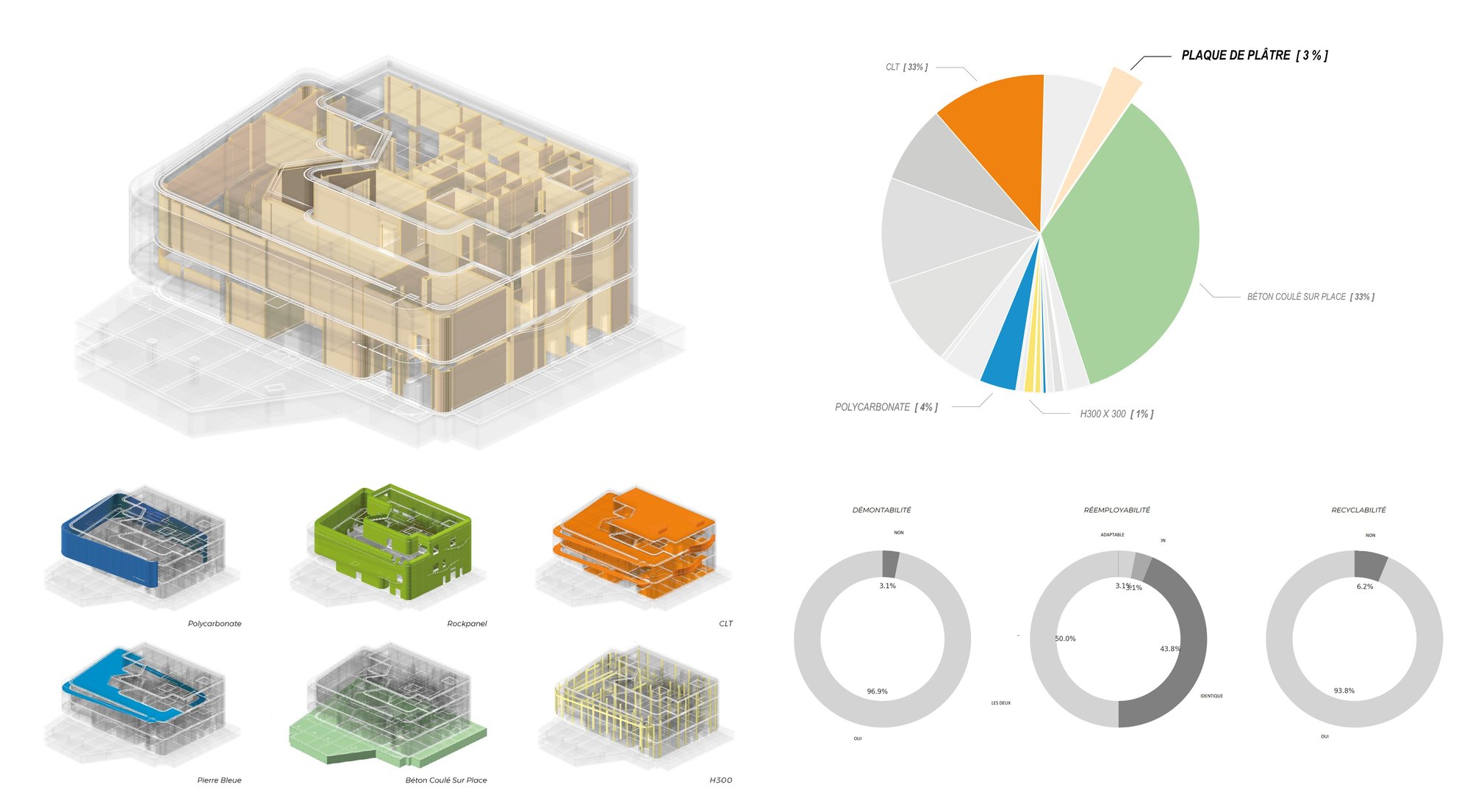
.jpg)
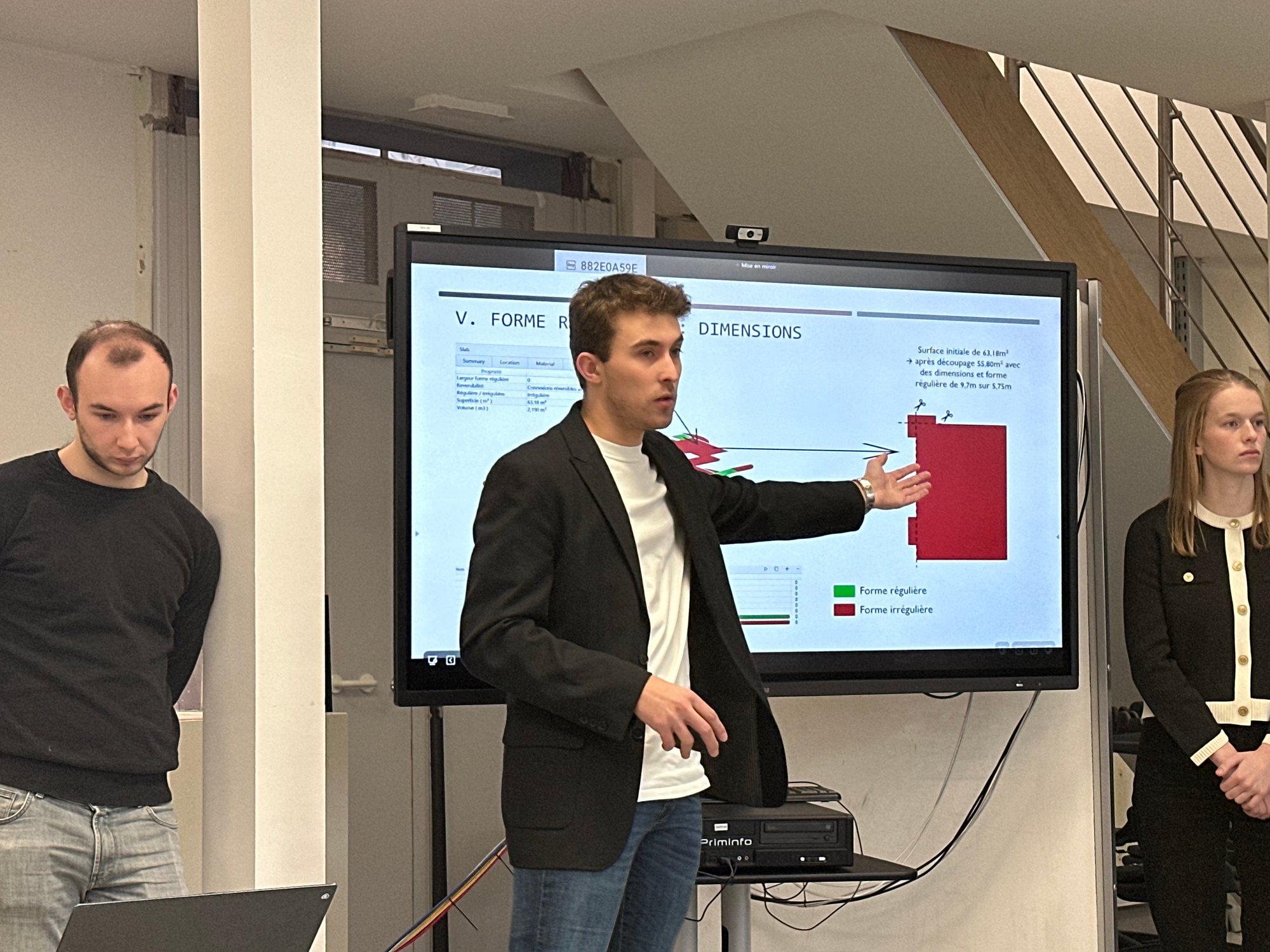
.jpg)
